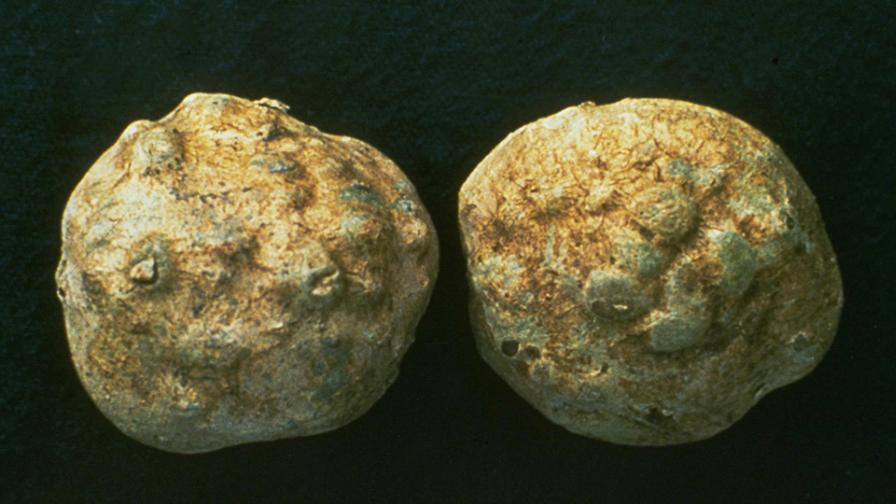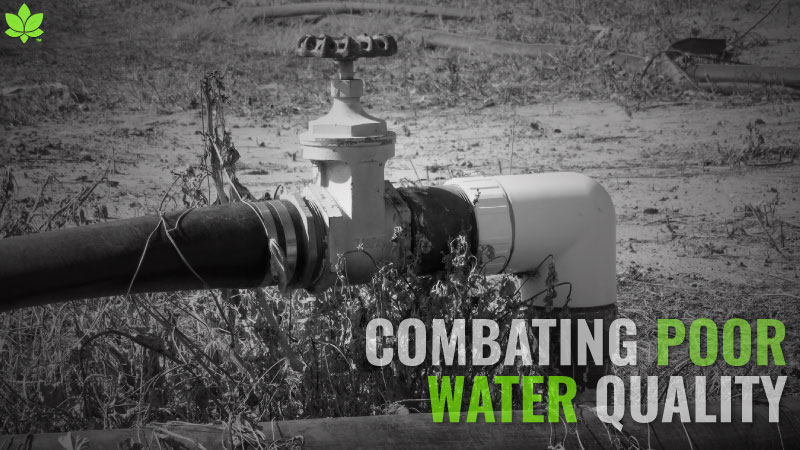Protect Your Potato Crops From Plant-Parasitic Nematodes
Plant-parasitic nematodes, microscopic roundworms, live either inside roots and other plant tissues (endoparasites) or in the soil (ectoparasites). Their life cycle includes an egg, several juvenile stages, and an adult stage. They can complete a cycle in just 20 to 50 days, depending on soil conditions, so there can be multiple generations in a season to build large populations. Nematodes can be very destructive to potato crops.
Before you plant, it’s worth the effort and expense to learn if harmful species are present in the field and whether their numbers are high enough to cause damage. Nematode management plans need to be implemented early to avoid disaster later, and they depend on knowing which nematodes you are up against.
Endoparasites to Know
Root-knot nematodes, including several Meloidogyne species, are endoparasites. Only the second juvenile stage and adult males live in the soil.
They are important potato pests because of the galls they produce on roots and tubers and the tiny necrotic spots they cause under the tuber skin. A female nematode and her mass of eggs can be found in each spot.
The most important species on potatoes are 1) northern root-knot nematodes (M. hapla) that cause small root galls and random tuber swellings; 2) southern root-knot nematodes (M. incognita) that cause large root galls and warty bumps on tubers; and 3) Columbia root-knot nematodes (M. chitwoodi) that cause pimple-like bumps on tubers. Treatment with soil fumigants, biofumigants, or other chemical controls is recommended when any root-knot nematodes are found in soil samples. That’s because it doesn’t take many of them at the beginning of the season to end up with significant damage at harvest.

Symptoms of root-knot nematode damage on potatoes.
Photo by William M. Brown Jr.
Root-lesion nematodes, of the Pratylenchus genus, are migratory endoparasites that move freely in and out of roots.
There are many species with overlapping territories, but P. neglectus is mostly found in the West, P. penetrans is common in the Midwest and East, and P. brachyurus is mostly found in the South.
These nematodes don’t blemish tubers, but they can make plants less vigorous and reduce yields. Damage is directly related to the number of nematodes present, and potatoes can tolerate low numbers without significant issues. The recommended treatment threshold often depends on the species; it can be as low as 50 nematodes per 100 cc soil for P. penetrans, or as much as 500 nematodes per 100 cc soil for the less aggressive P. neglectus.
P. penetrans is one of the more destructive species. It can interact with the soilborne fungus, Verticillium dahliae, to cause and increase the severity of early dying disease. Aggressive management of the nematode is recommended when both P. penetrans and V. dahliae are found in the soil, so the treatment threshold may be set as low as 25 nematodes per 100 cc soil.
Ectoparasites to Watch For
Stubby-root nematodes, including some Paratrichodorus and Trichodorus species, are ectoparasites that live entirely in the soil and feed on root tips.
They transmit Tobacco rattle virus (TRV), the causal agent of corky ringspot disease. Symptoms include internal brown arcs, rings, or blotches inside the tuber and arc-shaped lesions on the tuber surface.
Stubby-root nematodes rarely damage potatoes without the virus, but they can cause significant stunting of more susceptible plants like onions. The treatment threshold is upon detection of the nematode when corky ringspot is a concern. But it is often set at 200 or more nematodes per 100 cc soil in fields that are not infested with TRV.
Sting nematodes are ectoparasites of the Belonolaimus genus, especially B. longicaudatus. They are found only in sandy soils, and mainly in Florida and other parts of the southeast. They can do extensive damage to roots so that plants are severely stunted and easily stressed. Sting nematodes have a very long stylet (piercing mouthpart) to penetrate deep into root tissues, which kills cells and stops their growth. These nematodes may also feed on tuber surfaces, causing them to be misshapen with a scruffy or roughened skin. Treatment is generally recommended upon detection in soil samples.
Those are the four most widespread and economically significant nematodes that infect potatoes in the U.S. Other important nematodes include potato cyst nematodes, the potato rot nematode, and various ectoparasites like spiral, lance, stunt, and dagger nematodes.
How to Collect Predictive Samplings
Collect soil samples before planting and send them to a laboratory for a nematode assay. It’s best to sample when plants are growing in the field, because that’s when nematodes are most likely to be found in the root zone. Ideally, soil samples should be collected from a 6- to 10-inch depth, when soil temperatures are around 70°F, and the soil is neither too wet nor too dry.
Soil samples can miss nematodes if they have moved deep in the soil to avoid temperature and moisture extremes. Infestations are usually patchy, so it’s important to sample intensively, one sample for every 5 acres is recommended. A typical sampling scheme is to collect 20 soil cores within a 5-acre area, mix well, then bag a pint of the soil. Use a moisture-retaining bag, keep it cool, and get it to the lab as soon as possible.










